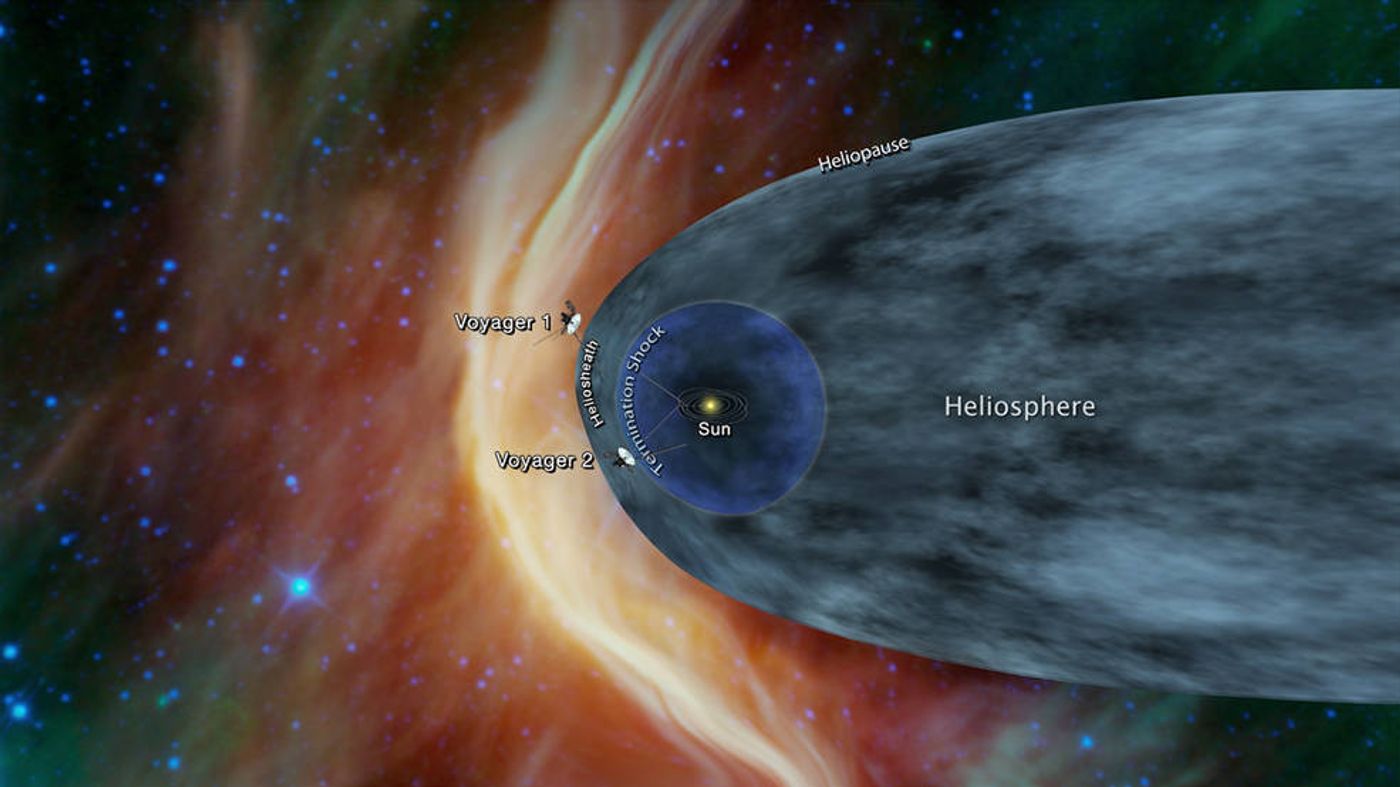NASA's Voyager 2 Spacecraft is Almost to Interstellar Space
Just over six years ago, NASA’s Voyager 1 spacecraft became the first human-made object to fly beyond the heliopause and into interstellar space. Fast-forward to today, and the Voyager 2 spacecraft is about to follow in Voyager 1’s footsteps to become the second human-made object to exit the solar system.
Image Credit: NASA/JPL-Caltech
In a recently-released official statement, NASA explains how the Voyager 2 spacecraft is now almost 11 billion miles away from the Earth – that’s approximately 118 times the distance between the Earth and the Sun. But that’s not all…
NASA also explains how at the end of August, Voyager 2’s Cosmic Ray Subsystem instrument began picking up elevated cosmic ray activity consistent with what spacecraft engineers witnessed when Voyager 1 crossed into interstellar space six years ago.
It reportedly took Voyager 1 three months after exhibiting these peculiar characteristics to cross into the great beyond, and if those circumstances are anything to go by, then it shouldn’t be long now before Voyager 2 does the same.
Related: Here's what interstellar space sounds like
You can think of the heliosphere as a protective barrier at the edge of the solar system that prevents harmful cosmic rays from getting to us. As Voyager 2 inches closer to the outer threshold of this barrier, its Cosmic Ray Subsystem instrument will detect a steady increase in activity until it finally climaxes at the point where the spacecraft exits the solar system.
But as NASA elucidates, there’s a catch; although Voyager 1 only took three months to leave the solar system upon exhibiting these characteristics, Voyager 2 could potentially take longer. The latter took a different course to get where it is today, so we can expect that it’s traveling at a slower rate of speed and that it could linger in the heliosheath longer than Voyager 1 did.
"We're seeing a change in the environment around Voyager 2, there's no doubt about that," explained Ed Stone, NASA’s Voyager Project Scientist. "We're going to learn a lot in the coming months, but we still don't know when we'll reach the heliopause. We're not there yet -- that's one thing I can say with confidence."
Related: NASA fires Voyager 1's thrusters for the first time in 37 years
As it would seem, there’s enough evidence to suggest that Voyager 2 will soon enter interstellar space, but we don’t know yet when that will happen. We expect that NASA will keep us all updated throughout the process, and it should be interesting to watch the results.
Source: NASA









